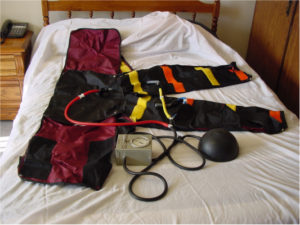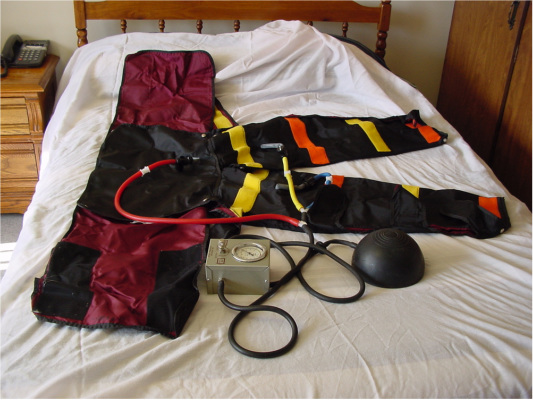This call required a real team effort to achieve the outcome, a Rescue 9-1-1 show segment. It may have been the outcome but it was the farthest thing from my mind when working on the ambulance we were dispatched to an accidental gunshot patient.
Luckily we were only 5 minutes away from the scene but unluckily about 35 minutes away from the small rural hospital. It turns out our patient was getting ready to clean his .243 rifle. He was sitting in a chair and bent down to pull it up towards him muzzle first. The trigger caught on something and the rifle discharged about 12″-18″ away from his abdomen.
One thing I would teach all my EMT students relative to trauma patients is to ask themselves a question…Is there a surgeon on scene? If the answer is no, then they better be hustling their butt to get their patient to one. With the long run to the hospital we quickly scooped up the patient, got them in the ambulance and headed for the hospital. My patient was a 14 year old male, about 60 KG, conscious, alert, no radial pulse, pale and troubling talking in more than 4-5 words.
Exposing his upper torso I could see where the bullet entered his abdomen just below the umbilicus and apparently traveled upwards to the left in his chest cavity based on the deformity to his chest wall. Lungs sounds were good on the right, absent on the left. No exit wound. Another thing I taught my EMT students was there are only four places you can put enough blood to kill someone. In their pelvis, belly, chest or on the ground. Didn’t take a rocket scientist to figure out the kid was in big trouble. I radio’d the hospital and gave them a quick report and advised them we needed a surgeon ready.
I put the patient on high flow oxygen, raised the board slightly on the right side to get his good lung higher than his bad and went to start two large bore IVs. Not a vein to be found. One thing that we had done prior to moving the patient onto a backboard was place a Pneumatic Anti-Shock Garment (PASG) down. This is where the young readers will Goggle “PASG”.  At the time they were required equipment on all ambulances and I had typically just used them to stabilize pelvic fractures. The mechanism of action is basically a pair of pants with inflatable leg sections and abdominal section. The concept is the pressure in the sections would result in an auto transfusion of blood to the core.
At the time they were required equipment on all ambulances and I had typically just used them to stabilize pelvic fractures. The mechanism of action is basically a pair of pants with inflatable leg sections and abdominal section. The concept is the pressure in the sections would result in an auto transfusion of blood to the core.
In this case I inflated the two leg sections but not the belly. I didn’t want to shove his abdominal contents through the bullet hole in his diaphragm into his chest cavity. I went back to the patients arms and had two nice antecubital veins staring at me. I dropped in two 14 gauge lines and began giving him some fluid. I wasn’t interested in dumping a bunch in but I did want to at least get a radial pulse back. Nothing worse than delivering a live patient who ends up dying later due to organ failure from inadequate perfusion. I didn’t needle the left chest since I figured I would just have a spigot of blood coming out and wouldn’t really help the situation.
I was prepared to intubate the patient but he continued to stay conscious and talk with me as I worked on him. I got a radial pulse back so I was happy on that count. I was also happily surprised when we pulled up to the ED and not only were they ready but the Level I trauma center in Portland had flown a surgical team down to meet the patient. He was whisked off to emergency surgery where they patched the holes and stabilized him for the flight back to Portland. The patient ended doing well and eventually was discharged. Many months later the Rescue 9-1-1 show included a segment on the call featuring the actions of the mobile surgical team.
Lesson to Learn: One thing I found in my career in EMS was if I had a critical patient and the course of treatment I chose seemed to be working, I would continue even if I wasn’t sure why it was working. Did the PASG help me get the lines or was it just lucky? For me the answer is they did help me get a vein to show where I didn’t have one before. Put in the same situation today I would do the same thing even though the proof is all anecdotal.
I’m curious if readers have stories to share of some treatment they applied that worked even though scientific evidence suggests otherwise.




Years ago >10 we would discuss not performing chest compressions on a still beating heart (Bradycardia) and other instances. Now we teach people, no signs of life (including the lay rescuer, no pulse check) begin chest compressions. The “theory” behind this was performing chest compressions on a still beating will cause a cardiac contusion.